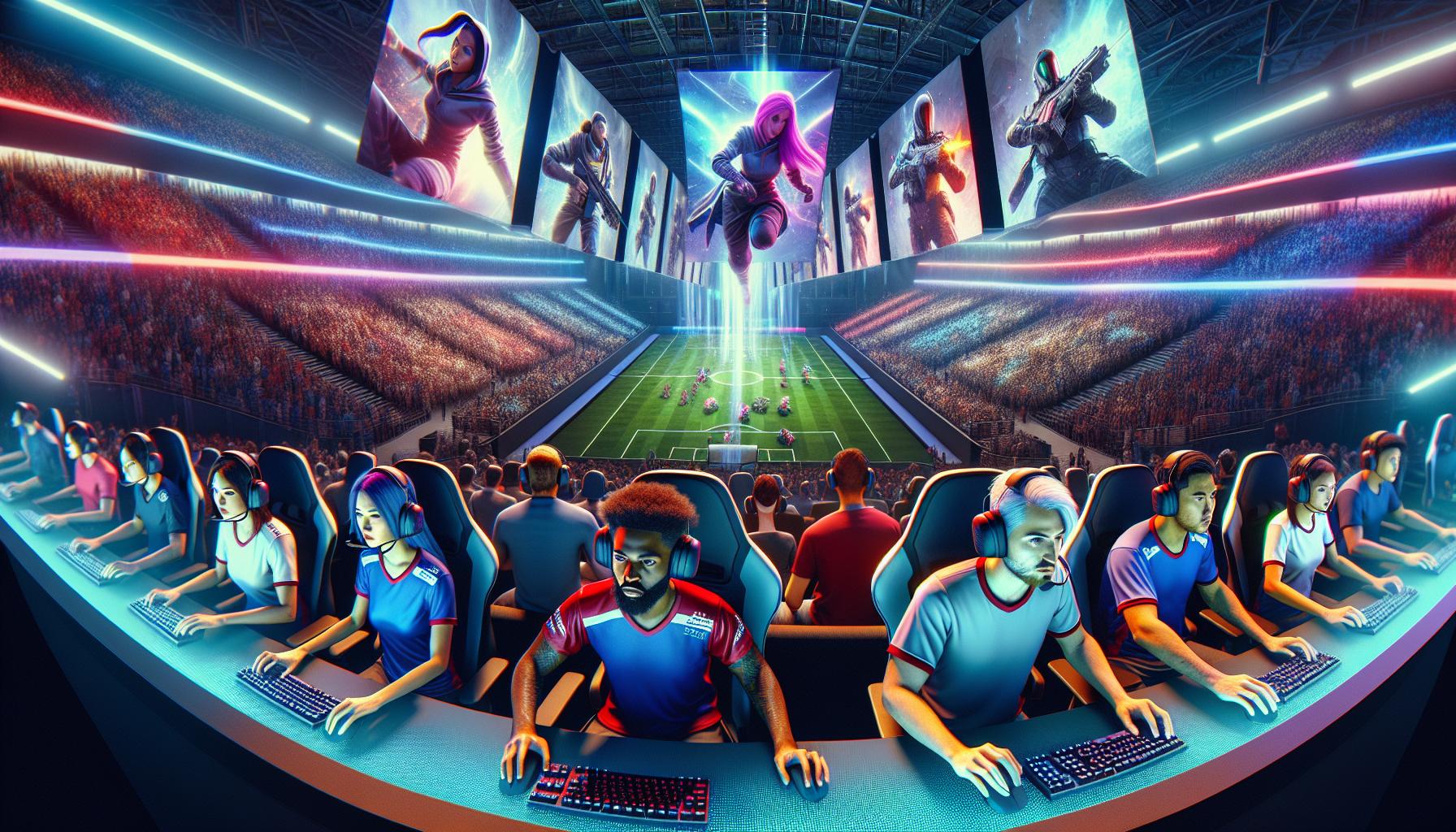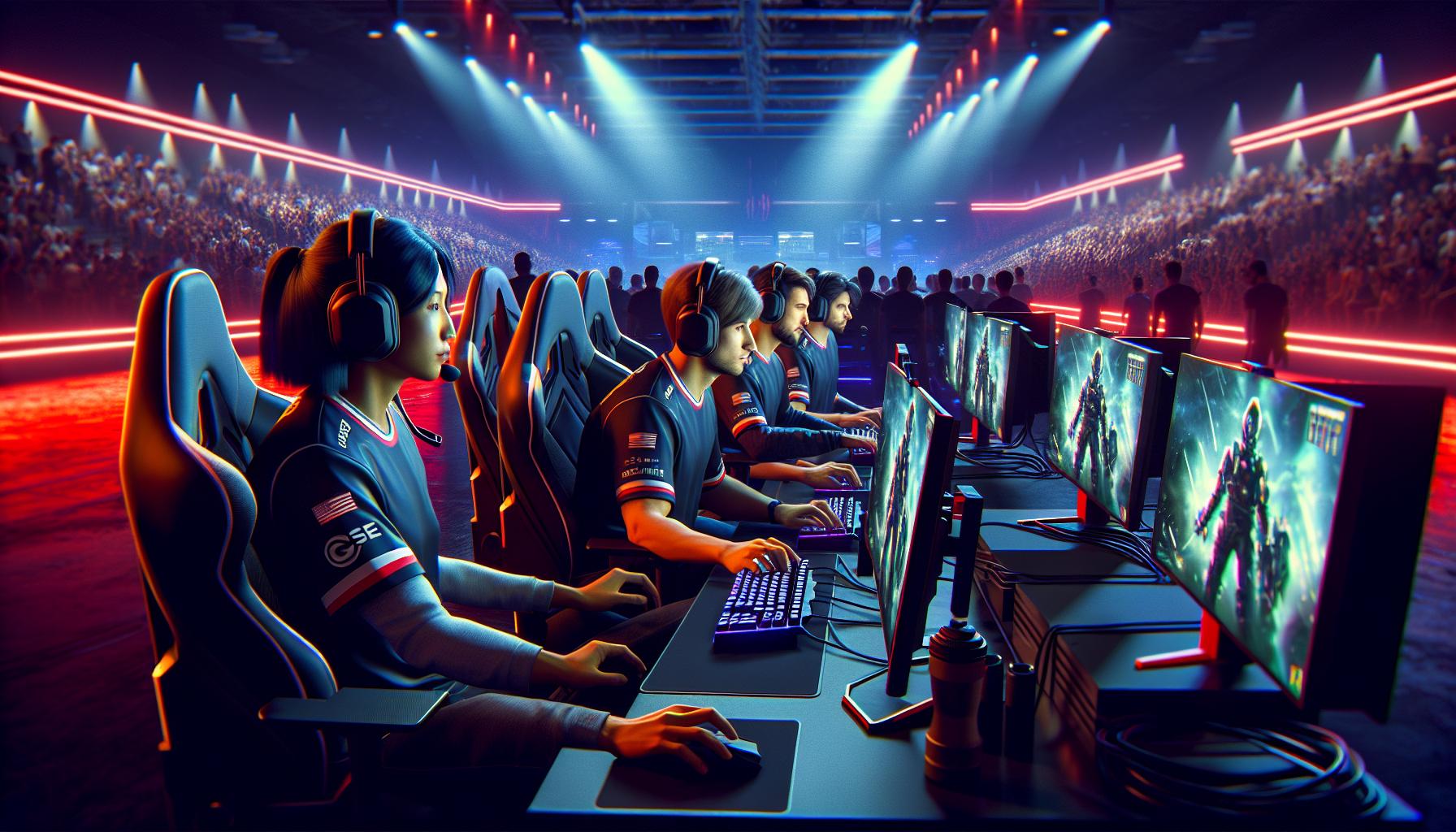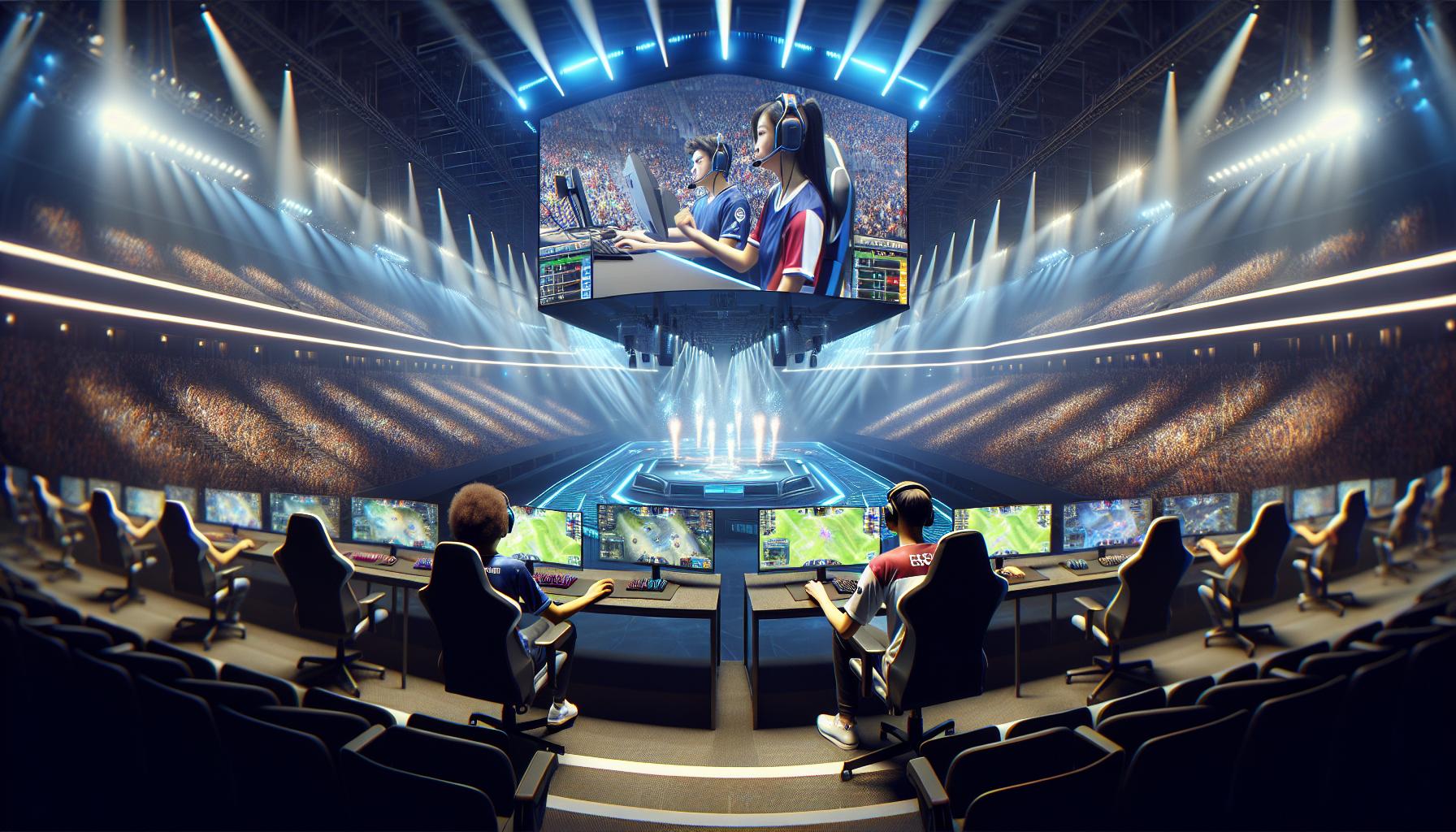Key Takeaways
- Esports Origins: The history of esports began in the 1970s, highlighting the first organized gaming tournaments and the rise of arcade culture, which set the foundation for competitive gaming.
- 1990s Developments: This decade saw the emergence of significant tournaments and the internet, which facilitated global competitions and increased visibility for esports.
- Professionalization in the 2000s: Major organizations like Major League Gaming (MLG) formed, professional teams emerged, and streaming platforms revolutionized the way esports content was consumed, leading to substantial viewership.
- Mainstream Success in the 2010s: Iconic games like “League of Legends” and “Dota 2” gained massive popularity, accompanied by significant investments and sponsorships that solidified esports as a legitimate entertainment industry.
- Future Trends: Emerging technologies such as VR, AR, AI, and blockchain are poised to enhance the esports experience for players and fans alike, while mobile gaming expands audience reach.
- Challenges and Opportunities: Esports faces regulatory uncertainties and market saturation, but it also has opportunities for global expansion, diversity, and educational partnerships that can drive future growth.
Esports has rapidly transformed from a niche hobby into a global phenomenon, captivating millions around the world. What began in the arcades of the 1970s has evolved into a multi-billion dollar industry, complete with professional leagues, sponsorships, and massive tournaments. Gamers no longer compete in isolation; they now showcase their skills on grand stages, drawing in fans and viewers comparable to traditional sports.
The journey of esports is marked by key milestones that reflect its growth and popularity. From the first competitive gaming events to the rise of streaming platforms, each development has shaped the landscape of competitive gaming. Understanding this history not only highlights the evolution of esports but also reveals its potential for future growth in an increasingly digital world.
Esports: A Brief History
Esports’ roots trace back to the early days of video gaming, highlighting a rich history of competition and cultural engagement. This section examines the initial competitive gaming events and the flourishing arcade scene that catalyzed esports development.
Early Video Gaming Competitions
Early gaming competitions began in the 1970s, as players showcased their skills in various video games. The first notable event occurred in 1972, when students at Stanford University held a tournament for “Standoff,” an early arcade game. Winners received subscriptions to Rolling Stone magazine as prizes, marking a shift toward organized competition. In the following years, events like the “Space Invaders Championship” ignited enthusiasm among gaming enthusiasts, drawing thousands of participants nationwide. These initial tournaments laid the groundwork for structured competition in gaming.
The Rise of Arcade Culture
Arcade culture emerged prominently in the late 1970s and early 1980s, fueled by the popularity of games like “Pac-Man” and “Donkey Kong.” Arcades became social hubs where gamers congregated to compete for high scores. They provided dynamic environments for informal tournaments that engaged communities. The arcade scene not only popularized gaming but also inspired developers to create new competitive games. By the mid-1980s, competitions such as “The Video Game Masters Tournament” attracted considerable attention, further legitimizing gaming as a competitive activity, leading to the future development of professional esports.
The 1990s: The Birth of Modern Esports

The 1990s marked a pivotal decade in the evolution of esports, characterized by significant tournaments and the rise of the internet. Competitive gaming began to gain mainstream recognition, setting the stage for the global phenomenon it would become.
Iconic Tournaments and Events
Major tournaments emerged during this decade, attracting players and spectators alike. The 1997 Cyberathlete Professional League (CPL) hosted tournaments for games like “Quake,” gaining attention and establishing a competitive framework. In 1998, the “StarCraft” tournament became a cornerstone of esports, introducing structured play and elevating player status. These events not only showcased talent but also demonstrated the potential for esports to attract sponsorship and funding.
The Impact of the Internet
The internet revolutionized gaming in the 1990s, facilitating online play and communication. Games like “Quake” allowed players to compete globally, creating communities and fandoms. Online platforms enabled broadcasting of competitions, increasing visibility and participation. The availability of high-speed connections contributed to the growth of multiplayer games, further expanding the reach of esports and laying the foundation for future leagues and tournaments.
The 2000s: Growing Popularity and Professionalization

The 2000s marked a significant era for esports, characterized by the establishment of major leagues and the emergence of streaming as a dominant broadcasting method. This decade solidified the transition of competitive gaming from casual play to a professional spectacle.
Major League Gaming and Professional Teams
Major League Gaming (MLG) emerged as a cornerstone of professional esports during the 2000s. Founded in 2002, MLG facilitated organized tournaments for titles like “Halo” and “Call of Duty,” attracting thousands of participants and millions of viewers. Teams began to form around popular games, with well-known organizations such as Team SoloMid and Fnatic establishing their reputations. Competitive gaming became a career, with players earning sponsorships and salaries, transforming gaming into a viable profession.
The Evolution of Streaming and Broadcasting
The rise of streaming platforms revolutionized how esports content reached audiences. Services like Twitch, launched in 2011 but rooted in earlier platforms, enabled gamers to broadcast their gameplay live, fostering community engagement. Gamers shared strategies, entertained viewers, and built personal brands. This shift to streaming attracted significant media attention and increased viewership for esports events. By the end of the decade, high-profile tournaments like The International for “Dota 2” and the League of Legends World Championship drew millions of concurrent viewers, establishing esports as a mainstay in entertainment.
The 2010s: Esports Becomes Mainstream

The 2010s marked a significant turning point in esports, transitioning from a niche pastime to a dominant force in the entertainment industry. This decade witnessed the rise of major titles and substantial investment, transforming the competitive gaming landscape.
Major Titles and Their Influence
Influential titles shaped the esports scene during the 2010s, driving interest and participation. Games like “League of Legends,” “Dota 2,” and “Counter-Strike: Global Offensive” became pivotal to the growth of esports. “League of Legends” saw its competitive scene flourish, culminating in the annual League of Legends World Championship, which, in 2018, attracted over 200 million viewers. “Dota 2,” known for its high-stakes tournaments like The International, offered a prize pool exceeding $30 million in 2021. These titles not only established dedicated player bases but also inspired the formation of professional teams and leagues, cementing their status within the esports ecosystem.
Sponsorship and Financial Growth
Sponsorship and financial investment surged in the 2010s, fueling esports’ ascent. Companies ranging from technology giants to consumer brands recognized the potential of esports, leading to multiyear sponsorship deals and endorsements. In 2019, the global esports market generated approximately $1 billion in revenue, primarily driven by advertising, sponsorships, and merchandise sales. Major organizations like Red Bull and Intel entered the space, supporting tournaments and teams, further legitimizing esports. The financial influx allowed leagues to enhance production quality, expand prize pools, and attract top-tier talent, reinforcing esports as a viable industry.
The Future of Esports
The future of esports promises exciting developments influenced by emerging trends and technologies. As the competitive gaming landscape grows, the integration of innovative solutions shapes its evolution.
Emerging Trends and Technologies
Emerging technologies revolutionize the esports landscape, enhancing player experiences and viewer engagement.
- Virtual Reality (VR): VR creates immersive environments for players and audiences, enriching gameplay and spectator experiences.
- Augmented Reality (AR): AR overlays digital elements onto the real world, offering fans interactive broadcasts that engage them like never before.
- Artificial Intelligence (AI): AI analyzes player performance, providing insights that help gamers improve skills and refine strategies.
- Blockchain: Blockchain secures transactions and enables the creation of digital assets, allowing players to own in-game items and create unique value.
- Mobile Gaming: Mobile esports rise due to the increasing accessibility of smartphones, attracting a larger audience and creating more competitive opportunities.
The convergence of these technologies enhances user experience and fosters greater involvement in the esports ecosystem.
Challenges and Opportunities Ahead
Despite the rapid growth, esports faces challenges that need addressing.
- Regulatory Issues: Unclear regulations surrounding game licenses and player contracts create uncertainties for organizations and participants.
- Market Saturation: The influx of new titles and leagues may overwhelm fans, causing competition for viewership and investment.
- Sustainability: Maintaining consistent revenue streams and ensuring the longevity of teams and events remain critical for success.
Opportunities abound despite these challenges.
- Global Expansion: Esports is poised for further international reach, tapping into markets in Asia, the Middle East, and Africa.
- Diversity and Inclusion: Promoting representation within teams and events fosters a broader audience while encouraging varied participation in esports.
- Educational Partnerships: Collaborations with educational institutions enhance professional development for players, providing structured career paths.
With proactive measures addressing challenges, the esports industry stands ready for growth and innovation.
Dynamic And Influential Sector
Esports has transformed into a dynamic and influential sector within the entertainment industry. Its journey from humble beginnings to a multi-billion dollar enterprise showcases the passion and dedication of players and fans alike. As technology continues to evolve the landscape of competitive gaming, the potential for growth remains vast.
The industry’s ability to adapt to new trends and challenges will determine its future success. With increasing investment and interest from traditional sports organizations, esports is solidifying its place in mainstream culture. The excitement and engagement surrounding esports promise a thrilling path ahead for players, fans, and stakeholders.